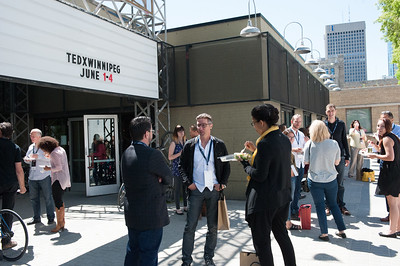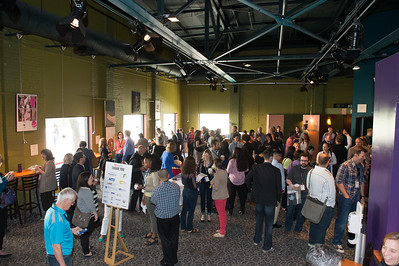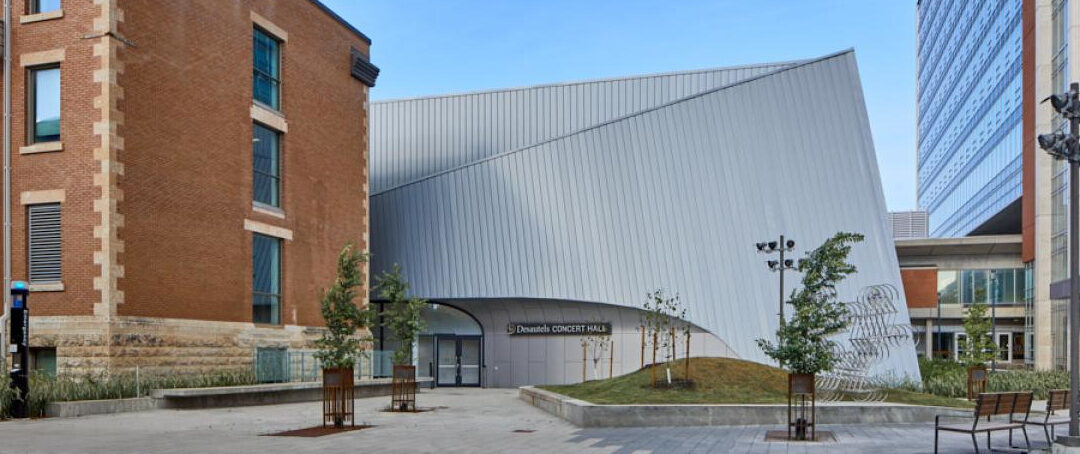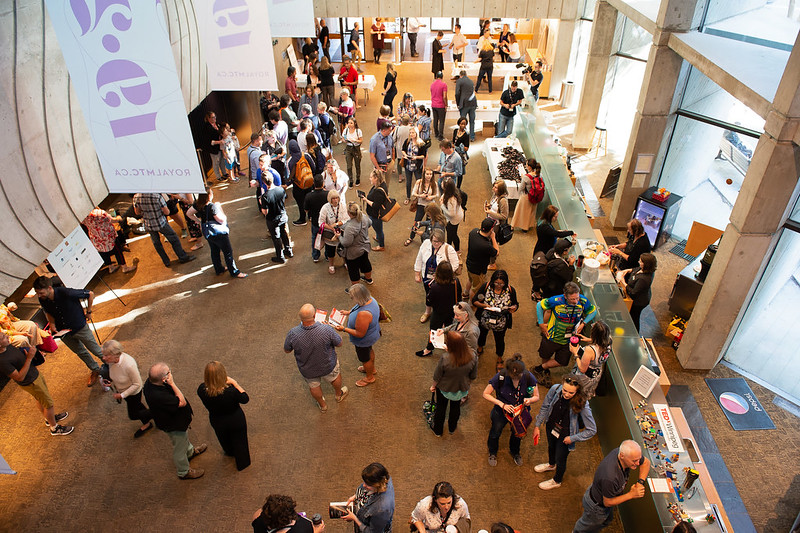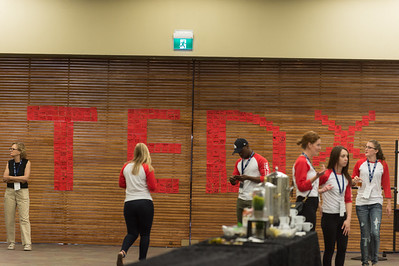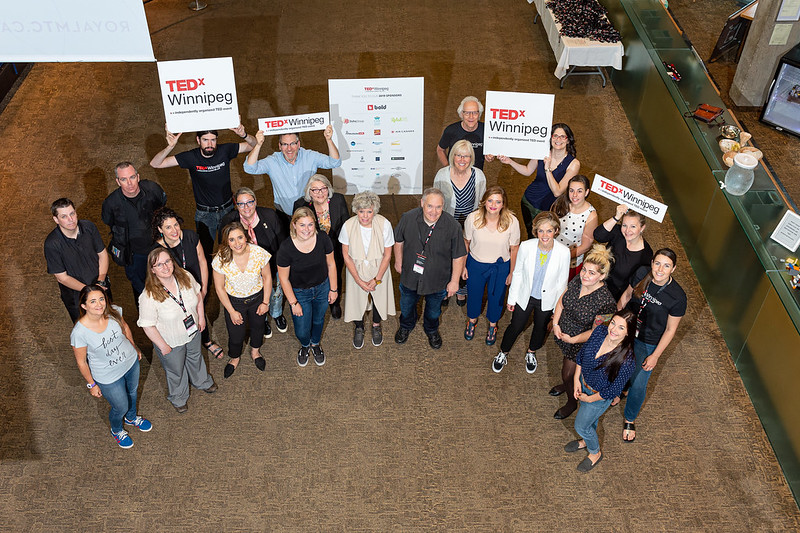It’s a tough job picking who gets to attend and who doesn’t. It’s a part of the process we’d rather skip entirely, but we’ve needed a mechanism to do this for each of our six year history. For the first five years, it was because our license from TED only allowed us to have 100 guests — this year it’s because of our venue capacity. We expected a capacity crowd, we just didn’t quite realize how far beyond capacity the demand would be.
So how do you choose?
Every method has issues. Can we say that one person is more deserving than another? No, we really can’t.
Can we set the ticket price high enough that a smaller number of people would want to go? This would make it self-selecting, so people could decide how badly they want to attend. Unfortunately, this would also mean some people are financially unable to attend. This is the first year we’ve charged anything at all, and we set the price at just $25. This helps us with expenses, but doesn’t nearly cover them — it just makes sure people are invested enough not to reserve a seat they don’t use. If this amount is a financial challenge for someone, we’d rather people told us that, and we’d find a way for them to attend anyway. Our heart is to be able to keep the event as close to free as possible so that anyone can attend, so using ticket fees to reduce audience size is the opposite of what we’re trying to do in spreading ideas.
We could just say first-come, first-served, and close the registration when the seats were full. This sounds the simplest, but anyone who has ever missed out on concert tickets because they sold out in under two minutes will tell you this method isn’t always as fair as it sounds. While we’re sure it would take a lot more than two minutes for us to sell out, we do face a lot of “But I didn’t hear about it!” and “I was out of town!” sort of comments every year as it is. This one ends up not being as “fair” as it sounds, and it would generally mean that our guests are basically the same people every year, which isn’t as good for sharing ideas as widely as possible.
Could we do a lottery? Have everyone sign up and then randomly select guests? Perhaps that would work, but there could be other issues with that. In answer to a random drawing, someone is always going to respond that they applied sooner, or are more deserving or more fitting for the guest list for one reason or another. From the perspective of the people who ultimately do attend, it removes the assurance that the others in a relatively small audience truly want to be there as much as they do, and for similar reasons.
But how do you choose?
 Every method is “unfair” in different ways, so here’s what we came up with. Firstly, we wanted to have the application process open long enough that people will hear and have time to respond. At the same time, we need to close it off early enough that we can let people know they’ve been accepted and give them time to arrange time off work or make any other preparations they need to. That’s how we gather a list of potential guests.
Every method is “unfair” in different ways, so here’s what we came up with. Firstly, we wanted to have the application process open long enough that people will hear and have time to respond. At the same time, we need to close it off early enough that we can let people know they’ve been accepted and give them time to arrange time off work or make any other preparations they need to. That’s how we gather a list of potential guests.
Next, we thought about who we wanted to have attend. The group isn’t defined by what they do or how much money they can spend on the ticket. It’s primarily those who want to invest a full day being inspired and hearing ideas that they will then want to share as widely as possible. It’s a mix of thinkers and doers who love to be inspired and as much as they can, to share that inspiration. It’s a group of people who truly “get” TED and who are willing to share ideas altruistically just to share the idea. A lot of these are the same things we look for in a TEDx speaker. TEDxWinnipeg is not for self-promotion, but for inspiration, connecting, learning, and sharing. It’s about releasing ideas into the wild just to see what will happen.
Some of the common reasons to want to attend are, on their own, not really enough to fit the bill. Those might include:
- having been selected in the past
- wanting to hear just one speaker
- knowing a speaker
- wanting to speak at a TED or TEDx event
- assuming TEDx is less of an event without you
- wanting to promote yourself
- your friend is attending
- you’re not already busy that day
We hope to have influencers, connectors, and idea-sharers. Now that we’ve got a list of interested parties, how do we pick? It seemed obvious that we can’t just look down the list and pick our friends, select the most well-known people, and finish up with the ones who sound the most cool to hang with for the day based on their social media profile.
No really, how do you choose?

We added some questions to help with the selection process by telling us a little bit about who each person is and why they want to attend. Nothing extensive, just the minimum. Something people can give a thoughtful answer to without returning a long-form essay. Here’s how the guest applications are reviewed:
- Names, addresses, any personally identifying (e.g., email, social media) and demographic information is removed and replaced with a number corresponding to the original data set. (Some of these are used to contact you later and some only for TED statistics.)
- The list is split up and a section given to each member of the guest selection team, who then has no idea whose responses they are looking at.
- Based on the total number of applications, each reviewer looks at X potential guests and must mark each one with Yes, No, or Maybe, with a maximum number of Yes and Maybe answers for their group of applications.
- The results from each reviewer’s Yes and Maybe are regrouped into two lists. Once the Yes group is tallied, whatever capacity is left is filled by re-scoring the Maybe group to complete the guest list.
- A “wait-list” is created from the remaining applicants.
- Finally (of course), the lists have the personal information added back to them based on their number ids so that we can contact people and let everyone know the final result.
There’s a little of everything in this method. This year we even added a first-come, first-served component. Most importantly, we remove the selection bias of knowing whose application is being reviewed, and a certain amount of randomness is added into the process, since any given applicant could be in a group with strong responses or weaker ones. In the end, we’ve come up with a process that makes for a good deal of extra work, but is all done in the spirit of keeping things open, accessible, and relatively “fair”, with a dash of randomness. A fortune 500 CEO is on the same level as an entry-level daycare worker, a journeyman welder, single mother, student, entrepreneur, retiree, artist, athlete, firefighter, lawyer, or government official. And we try to fill the room with people who want to engage with the ideas, as best we could determine through a few low-impact questions.
At the end of the day, we’re going to say no to people who maybe-probably should be there, and we’ll end up saying yes to people who may just take their seat for granted. That’s okay. It has to be okay, and we have to live with it, since it’s the best we’ve come up with after countless hours of good people looking at it from every angle they could discern over the past six years.
We’re confident that this process has become more refined each year, but we’d actually like to dispense with it and just fling the doors open. We’ve gotten a license from TED now that allows us to have more guests, and based on this year’s response we are already looking at larger venues for next year in hopes that everyone who wants to join us will be able to.

